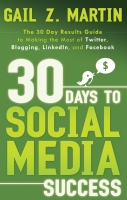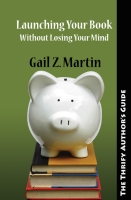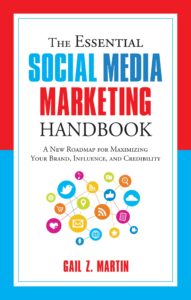Results Envy occurs when your prospect sees the outcome you have delivered to your customer and wants it so badly it makes his/her teeth hurt.
Compelling case studies deliver Results Envy when you tell a story that draws the prospect in, evokes emotions and delivers a story that engages emotion.
See, Results Envy works because as human beings, we’re wired for stories. Since the first cavemen crouched around a campfire and shared ghost stories or hunting stories or myths of how the world came to be, we have learned that stories are important for survival.
You see, we are wired for stories. It’s how we learn. It’s how we come to understand the world around us, who we are, where we belong, and what’s possible. The stories we tell—in our families, our communities, our houses of worship, our countries—they give us a sense of identity and they give us our sense of how the world works.
That’s why it’s so risky to decide that you don’t need to tell stories. See facts are good, there’s a place for a list of features and benefits, but that’s not where the big hurdle is to bring people to ‘yes’. It doesn’t happen in the frontal lobes, where the logical thinking occurs. It happens in the lizard brain, the old brain, the amygdala, where everything is driven by emotion. Fight or flight. Friend of enemy. Food or predator. Mate or threat. That’s the old brain, and it still plays a big part in how we made decisions. It’s the shadow brain, the one that tells us what to be afraid of, the part of our brain that worries in the middle of the night. Satisfy the lizard brain, and you make the sale.
Case studies can evoke Results Envy better than testimonials.
Testimonials are about the ending. That’s all. They talk about the outcome, but not the journey. They’re short, and we don’t get to know the person giving the testimonial. They could be anyone. We don’t know what they’ve gone through, why the outcome mattered, what was on the line. It’s like reading the last page of a book or watching the last scene of a movie.
There’s a place for testimonials. But testimonials serve as post-purchase reinforcement or pre-purchase encouragement, they don’t make the sale. Case studies—stories—make the sale.
Case studies also overcome the ego/budget factor to create Results Envy.
I want you to realize that you don’t sell services. You don’t sell products. You sell solutions to problems.
If you’re a consultant, you help people figure out what they can’t figure out on their own. If you sell a product, you provide a tool to people to do something they can’t do without your tool. And that’s the problem. Your customer has to admit to being a failure before they are willing to buy your product or services.
Most people won’t buy a solution to their problem until they have tried to fix it themselves. Either they don’t want to spend the money (budget) or they don’t want to admit they can’t do it alone (ego). Think about the last time something broke at your house. Whether it was a clogged drain or a glitch garage door, I bet you tried at least once—maybe more—to fix it yourself before you called in a professional or went out to Lowe’s or Home Depot to buy a replacement.
Why? Because you didn’t want to spend the money, and you figured ‘it can’t be that hard.’ Am I right? You know that’s how we do things.
But the truth is, we try to fix it ourselves. We duct tape things together for as long as we can. We work around the broken part until we can’t stand it anymore, or until it doesn’t work at all, or until someone else refuses to put up with it and makes us do something about it.
We have to fail before we’re ready to buy—and we have to admit to ourselves that we have failed. That hurts. We don’t like that. In fact, we’ll try really hard not to come to that conclusion. And that’s why people put off buying your products and services.
They’re not ready to fail. They’re not ready to admit that they can’t do it themselves if they try a little harder or a little longer. They’re not ready to put away the duct tape and admit it’s really broken.
Case studies—stories—make it easier for them to get past the ego/budget factor by showing them what happened to someone else. Someone who had a problem just like theirs. Someone just like them. Someone with the same fears and hopes, who was in a lot of trouble, like them, until they saw the light. Someone who trusted you and your product or service to help, and then got the jackpot, got the solution and peace of mind and money and good night’s sleep and no more acid reflux. And when they get to that point in the story, they’ve got Results Envy and they want what you’ve got more than they want their pride and more than they want their money. And you’ve got a customer.
Now the fourth reason you want Results Envy is because it helps to validate Return on Investment.
For 99% of us, money is finite. There isn’t enough to do everything, so it’s a constant series of trade-offs. Do I buy this because if I do, I can’t buy that. Invest here? If so, can’t invest there. Always an opportunity cost, something you miss out on because you did something else and you can’t do both.
So if you want a customer to spend money with you, that’s money they can’t spend on something else. So not only do you have to get them past that ego/sticker-price issue, you’ve also get them to want what you’ve got to offer more than what they’re passing up to get it.
How do you do that? With Results Envy.
When your prospect wants the outcome so much that he or she can taste it, touch it, smell it, feel it, and imagine themselves living with the solution to their problem, he will validate the ROI to himself. You won’t have to do it. Your prospect will argue themselves into the purchase. She’ll talk herself out of her objections, because she is already sold on the outcome.
Results Envy will make the ROI argument for you.
Write your case studies with Results Envy in mind, and see the difference it makes turning prospects into customers!
Gail Z. Martin owns DreamSpinner Communications and helps companies and solo professionals in the U.S. and Canada improve their marketing results in 30 days. Gail has an MBA in marketing and over 25 years of corporate and non-profit experience at senior executive levels. Gail also hosts the Shared Dreams Marketing Podcast and she’s the author of 30 Days to Social Media Success and The Thrifty Author’s Guide to Launching Your Book. Find her online at www.DreamSpinnerCommunications.com, on Twitter @GailMartinPR and check out her Facebook page at 30 Day Results Guide.


 by Karen Rowe
by Karen Rowe




